Lighting can completely change the way your kitchen feels. It’s not just about being able to see, it’s about how the space works when you’re cooking, entertaining, or grabbing a snack at midnight. And let’s be honest: bad lighting is one of those things you don’t always notice right away, but once you fix it, you wonder how you ever lived without it.
At Rich Home Inc., we’ve worked with countless homeowners across Burlington, Oakville, and Hamilton who were frustrated with dark corners, harsh overhead lights, or not enough lighting where it actually matters. If you’re wondering how to choose the best lighting plan for your kitchen, this guide covers everything, from the little details to the big design decisions, so you get it right from the start.
Why Lighting Makes or Breaks a Kitchen
Your kitchen isn’t just for cooking anymore. It’s where people hang out during parties, where kids do homework, and where life generally happens. Every one of those moments needs light, and not just any kind of light.
One of the most common regrets we hear from homeowners is that they didn’t think about lighting early enough. They focused on cabinets and countertops, and by the time they got to lighting, it was an afterthought. That’s how you end up with weird shadows, light in the wrong places, or one giant fixture that tries to do everything and fails.
Good kitchen lighting balances style and practicality. It helps you work safely, makes the space look amazing, and sets the mood for how you want to feel in your kitchen every day, especially if you’re planning a full kitchen upgrade in Burlington and want to get every detail right from the start.
What Is a Lighting Plan, and Why You Should Have One
A lighting plan is just that: a plan. It’s not just picking a pretty light fixture; it’s thinking about how each part of your kitchen will be used and lit. A proper kitchen remodel plan considers layout, natural light, ceiling height, finishes, and how your family uses the space.
Without one, you might end up with too many pot lights that make the kitchen feel cold, or not enough light over your island. With a plan, every zone in your kitchen gets the right kind of lighting, from soft background light to task-specific brightness and decorative touches that elevate the design.
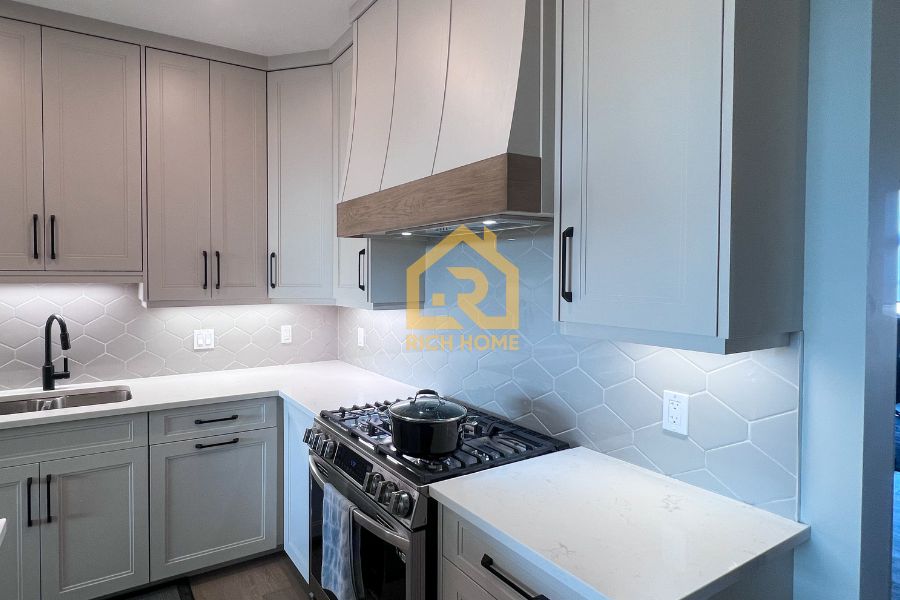
Kitchen Lighting Questions People Are Searching For
Question from Homeowners | Real Advice You Can Use To Plan Your Kitchen |
| What kind of lighting is best for a kitchen? | Use a combination of ambient (general ceiling lights), task (under-cabinet or focused lights for prep areas), and accent lighting (pendants or in-cabinet lights). This layering gives you both function and a beautiful finish. |
| How do I choose a kitchen lighting layout? | Start by dividing your kitchen into zones, cooking, prepping, dining, and make sure each has dedicated lighting. Space pot lights evenly (usually 4–6 feet apart) and always light work surfaces from the front to avoid casting shadows. |
| Are pot lights enough for a kitchen? | No. Pot lights are great for general light, but you still need task lighting for areas like the sink and counters, plus accent lighting to add warmth and personality. Relying on pot lights alone often results in dark spots and glare. |
| What lighting works best in small kitchens? | Keep fixtures compact and layered. Use flush or semi-flush ceiling lights for general lighting, under-cabinet strips for tasks, and limit decorative lighting to one strong visual element like a single pendant to avoid clutter. |
| Can I mix lighting styles in one kitchen? | Yes, but choose one unifying element, like matching finishes or similar shapes, to keep the look intentional. For example, pair matte black track lights with black pendant fixtures, even if their styles are slightly different. |
| What’s the best lighting over a kitchen island? | Pendants are ideal. Use one pendant for every 24–30 inches of island length and hang them 30–36 inches above the counter. Choose fixtures that are proportional to your island size and dimmable for flexibility. |
These questions show that people aren’t just looking for technical info, they want to avoid mistakes and feel confident that their kitchen will both work and wow.
The 3 Layers of Light Every Kitchen Needs
Ambient Lighting: The Base Layer
This is your general lighting, the soft glow that fills the room. In most kitchens, it comes from recessed (pot) lights or flush-mount ceiling fixtures. But here’s the thing: if this is the only lighting you have, you’ll probably end up with shadows and eye strain, especially in the evening.
In many homes we work on in Burlington, Oakville, and Hamilton, ambient lighting usually means a grid of pot lights. But we always advise clients to space them correctly based on ceiling height and kitchen size. Too many and the space looks flat. Too few and it feels like a spotlight show.
Quick tip: Warm white LEDs around 2700K–3000K create a soft, welcoming light that doesn’t feel sterile.
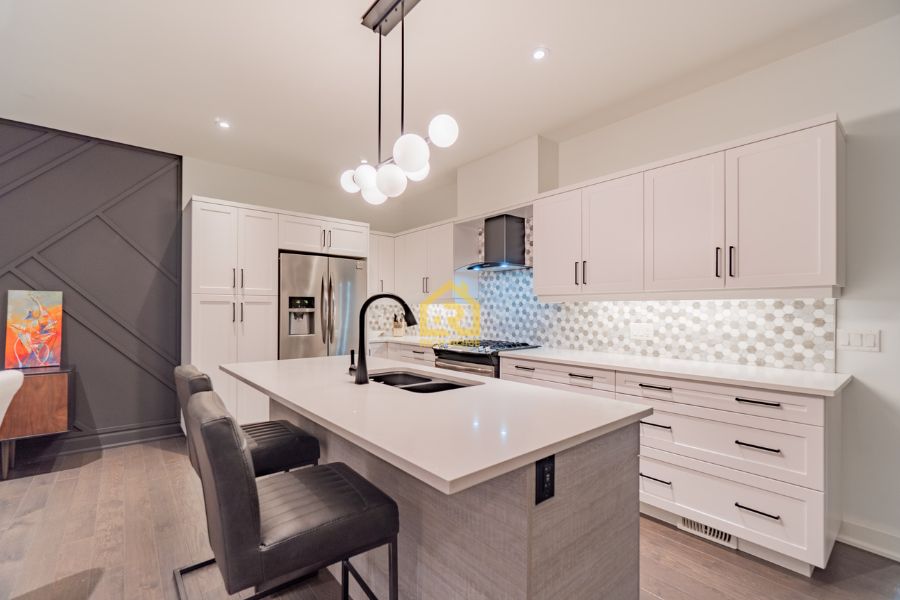
Task Lighting: Where It Really Matters
This is the lighting that does the heavy lifting. Think about where you chop vegetables, wash dishes, and cook, that’s where you need focused light.
Under-cabinet lighting is the hero here. It lights up your countertops without casting shadows from your body or your upper cabinets in the kitchen. We usually recommend dimmable LED strips, they’re sleek, modern, and make a huge difference in how functional the space feels.
We’ve worked with a lot of homeowners in Oakville and Hamilton who had beautiful kitchens that were hard to work in simply because they didn’t have task lighting. Once we added under-cabinet lights, the entire cooking experience changed.
Ideal temperature: 3000K–3500K. Bright enough to work, soft enough not to feel like a lab.
Accent & Decorative Lighting: The Finishing Touch
Accent lighting is where you show off, that beautiful tile backsplash, a floating shelf with dishes, or even lighting inside glass-front cabinets. Decorative lighting adds personality and gives your kitchen a finished, polished look.
Pendant lights over the island are a popular choice, and for good reason. They anchor the space and can double as task lighting if placed right. For a standard island, we suggest spacing pendants about 24–30 inches apart, and hanging them 30–36 inches above the countertop.
Clients in Burlington especially love using black or brass fixtures to create contrast against white cabinetry, and it looks fantastic.
Design tip: Mixing metals or styles? Keep at least one element consistent, like finish or shape, so it still feels cohesive.
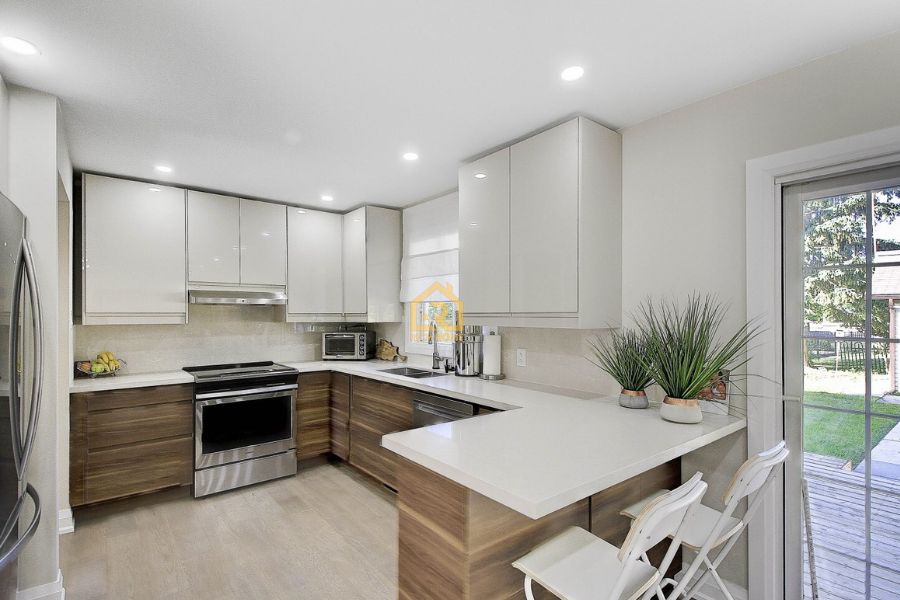
Choosing the Right Lighting Fixture for the Right Kitchen Space
It’s easy to get overwhelmed by lighting choices. The key is to match the fixture to the function and the layout of your kitchen.
| Fixture Type | Best Use | Watch Out For |
| Recessed Pot Lights | Even general lighting | Too many can flatten the design |
| Pendant Lights | Over islands and dining areas | Scale matters, don’t go too big or too small |
| Under-Cabinet LEDs | Task lighting | Poor quality strips won’t last |
| Track Lighting | Adjustable in tricky layouts | Can look outdated if not chosen carefully |
| Flush Mounts | Great for condos or low ceilings | Limited reach |
| Toe-Kick Lighting | Night lighting or visual effect | Requires advanced planning during renovation |
Don’t Forget the Bulbs
Fixtures get all the attention, but bulbs do the real work. Choosing the wrong bulb can ruin the effect of a beautiful fixture.
We always recommend LED bulbs because they’re energy-efficient and long-lasting. But pay attention to brightness (lumens), color temperature (Kelvin), and CRI (Color Rendering Index).
Brightness: Aim for a total of 3,000–4,000 lumens across your kitchen
Color Temperature:
- 2700K for warm, cozy lighting
- 3000K–3500K for task lighting
- 4000K+ only if you want a cooler, more industrial feel
CRI: Look for 80 or above so your food and finishes look true to color
Smart bulbs are another option we’re seeing more of in Hamilton and Oakville. Set different moods for meal prep, dinners, or late-night snack runs, all from your phone.
Avoid These Common Kitchen Lighting Mistakes
Even a beautiful kitchen can feel “off” if the lighting is wrong. Here are some of the most common issues we help fix:
- Only using pot lights. It’s the most common mistake. You need layers to avoid shadows and give the space depth.
- No dimmers. Lighting should adapt to time of day and activity. Dimmers give you that control.
- Wrong color tone. Cool lighting can feel stark, especially in homes with warm finishes or natural wood.
- Pendant lights hung too high or low. Scale and spacing matter, they can make the whole room feel unbalanced.
- No task lighting. Looks great, but you can’t see what you’re chopping? That’s a problem.
What About Your Kitchen Layout?
Layout impacts lighting more than people think. A galley-style space during a kitchen layout planning in Hamilton might only need a few recessed lights and under-cabinet strips, while an open-concept kitchen could call for zoning with pendants, accent fixtures, and layered ceiling lights.
We work with every layout differently:
- Small kitchens: Prioritize lighting with compact, dual-purpose fixtures. Undermount and recessed lights shine here.
- Open-concept: Use lighting to define zones, cooking, dining, and entertaining.
- Low ceilings: Flush mounts and under-cabinet LEDs give a clean, modern feel without crowding the room.
Natural light also plays a role. Think about where the sun hits during the day. Add dimmers or smart lights to balance out those shifts so your kitchen always feels just right.
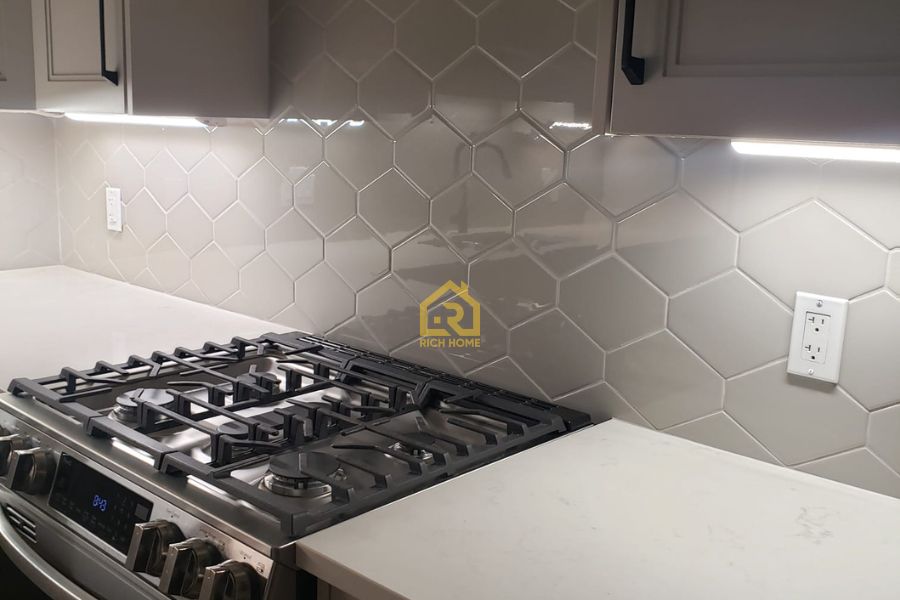
Lighting the Kitchen Island: What to Know
The kitchen island is often the heart of the home. It’s where people gather, where meals are prepped, and where conversations happen. Lighting needs to be both functional and inviting.
Pendants are the go-to here, but make sure they’re the right size for your island. Too big, and they overwhelm. Too small, and they look lost.
Simple rule:
- One pendant every 24 inches of island length
- Bottom of the fixture should sit about 30–36 inches above the countertop
In Burlington, we’ve seen stunning combinations like three matte black pendants over a white quartz island, timeless and dramatic in all the right ways.
Can You Get Away Without All Three Types of Light?
Not really. Skipping a layer always leads to compromise. Just ambient light? You’ll struggle with shadows. Only task lights? The space feels incomplete. Accent lighting missing? You lose that sense of style and detail.
Every kitchen we’ve worked on that truly feels complete has all three: ambient, task, and accent. Together, they create comfort, function, and atmosphere.
Don’t Wait to Plan Your Kitchen Lighting
This is the big one: lighting should be part of your renovation planning from the start, not something you figure out after the cabinets go in. It affects your electrical plan, your ceiling layout, and even where appliances go.
If you’re in Burlington, Oakville, or Hamilton, and you’re planning a kitchen upgrade, we’ll help you map it all out, so nothing feels rushed or missed. A good lighting plan isn’t just a detail; it’s the difference between a kitchen that works and one that wows.
Let lighting be the part of your kitchen that brings it all together, function, beauty, and warmth, all in one space.
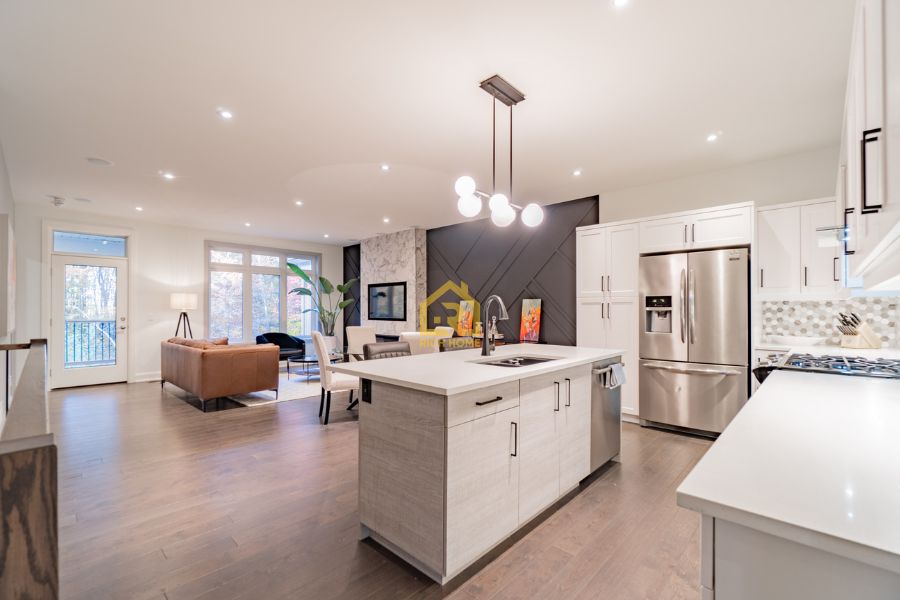
Areas We Serve
We are proud to offer our Home Renovation services in the following areas:
Hamilton
Burlington
Oakville
Milton
Mississauga
Toronto
Contact Info
Send us a message or call us and we’ll get back to you as soon as we can.
Valid until end of month
book now for SPECIAL saving!
free estimate
(647) 994-1439
have a questions?
info@richhomeinc.ca
Get Started Today
Transform your home with Rich Home Inc. Contact us now for a free consultation and begin your renovation journey!